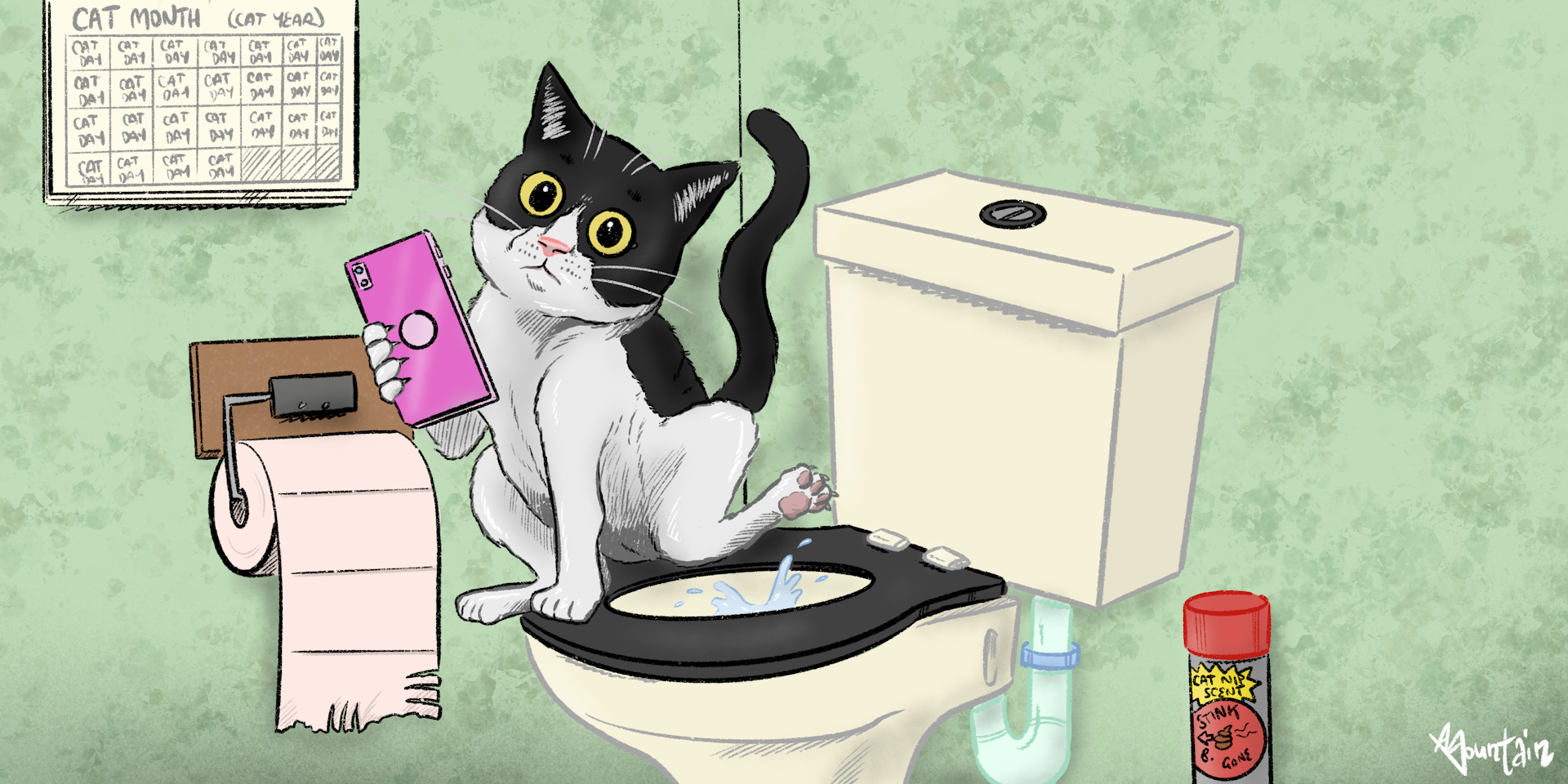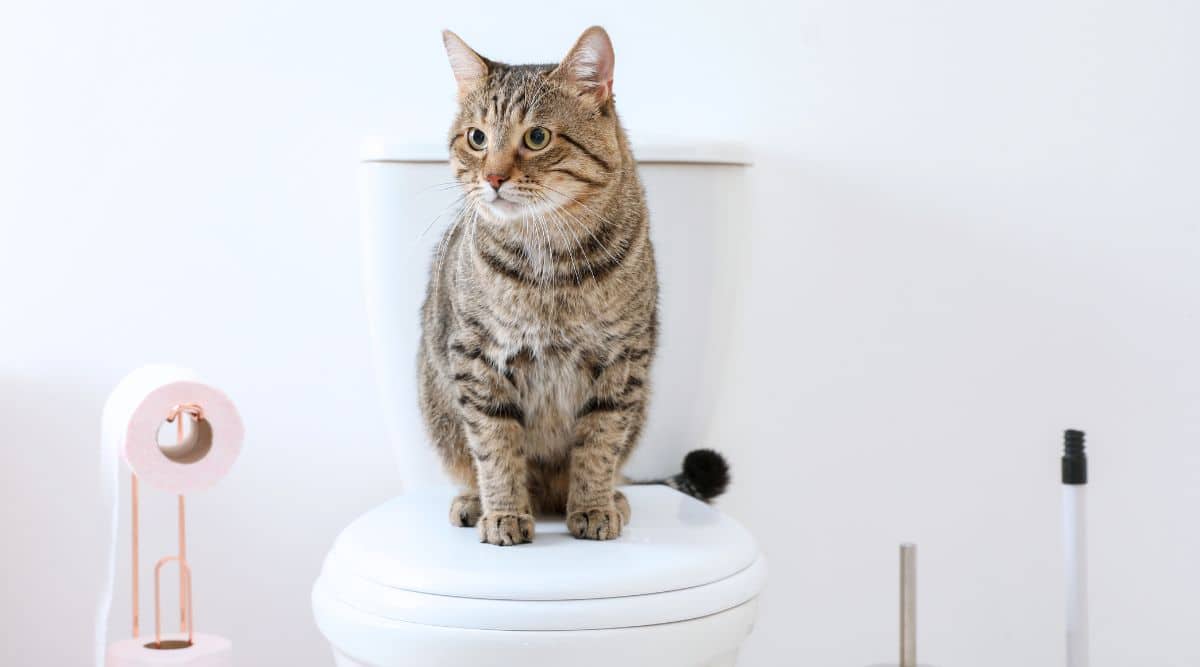Explanations Why You Need to Never Empty Animal Waste Down the Toilet
Explanations Why You Need to Never Empty Animal Waste Down the Toilet
Blog Article
We've found this post pertaining to Can You Flush Dog and Cat Poo Down the Toilet? listed below on the web and decided it made sense to share it with you here.

When it comes to taking care of waste, specifically animal waste, lots of people commonly resort to the practical alternative of flushing it down the toilet. Nonetheless, this relatively very easy service can have major effects for the setting and public health. In this write-up, we'll discover why flushing pet waste down the commode is a bad concept and provide different approaches for correct disposal.
Intro
Proper garbage disposal is crucial for preserving environmental sustainability and public health. While it might seem safe to purge animal waste down the bathroom, it can lead to numerous problems, both for the environment and human wellness.
Dangers of flushing animal waste
Ecological influence
Flushing animal waste presents unsafe germs and virus into waterways, which can adversely impact water communities. These virus can infect water resources and harm marine life, interrupting fragile communities.
Public health problems
Animal waste consists of unsafe bacteria such as E. coli and Salmonella, which can position major health risks to human beings. Flushing pet waste down the toilet can infect water materials, causing the spread of diseases and infections.
Alternatives to flushing
As opposed to flushing pet waste down the toilet, there are a number of alternate disposal approaches that are a lot more environmentally friendly and hygienic.
Composting
Composting animal waste is an eco-friendly way to get rid of it. By composting, organic matter is broken down into nutrient-rich soil, which can be made use of to feed yards and plants.
Landfill disposal
Taking care of animal waste in a garbage dump is an additional alternative. While not as eco-friendly as composting, it is a more secure choice to flushing, as it prevents the contamination of water resources.
Pet dog garbage disposal systems
There are specific pet dog garbage disposal systems offered that securely and hygienically deal with pet waste. These systems usually make use of enzymes to break down waste and get rid of smells.
Steps to correct pet waste disposal
To ensure appropriate disposal of pet waste, adhere to these steps:
Scooping and getting waste
On a regular basis scoop and bag animal waste using eco-friendly bags. This prevents waste from infecting the environment.
Making use of assigned waste containers
Dispose of bagged animal waste in assigned waste containers, such as garden compost containers or landfill containers. Prevent flushing it down the bathroom in any way prices.
Cleaning can and pet locations consistently
Consistently tidy litter boxes and animal areas to prevent the build-up of waste and germs. Use pet-safe cleansing products to preserve health.
Benefits of correct disposal techniques
Adopting appropriate disposal approaches for animal waste offers a number of advantages:
Decreased environmental pollution
Correct disposal techniques reduce the risk of environmental pollution, shielding rivers and ecological communities from contamination
Reduced threat of water contamination.
By avoiding flushing animal waste down the commode, the threat of water contamination is considerably minimized, guarding public health.
Boosted cleanliness and hygiene
Correct disposal methods promote far better sanitation and health, producing a much safer setting for both people and pets.
Final thought
Finally, purging pet waste down the toilet is damaging to the setting and public health. By adopting alternate disposal approaches and following proper waste administration techniques, we can minimize the negative impact of pet waste and add to a cleaner, much healthier earth.
Why You Should Never Flush Cat Poop Down the Toilet
A rose by any other name might smell as sweet, but not all poop is created equal. Toilets, and our sewage systems, are designed for human excrement, not animal waste. It might seem like it couldn’t hurt to toss cat feces into the loo, but it’s not a good idea to flush cat poop in the toilet.
First and foremost, assuming your cat uses a litter box, any waste is going to have litter on it. And even the smallest amount of litter can wreak havoc on plumbing.
Over time, small amounts build up, filling up your septic system. Most litter sold today is clumping; it is made from a type of clay that hardens when it gets wet. Ever tried to scrape old clumps from the bottom of a litter box? You know just how cement-hard it can get!
Now imagine just a small clump of that stuck in your pipes. A simple de-clogger like Drano isn’t going to cut it. And that means it’s going to cost you big time to fix it.
For an amusing, graphic tale of what happens when you flush too much litter down the toilet all at once, take a few minutes to read Gene Weingarten’s 2017 Washington Post column “So that’s what happens when you flush cat litter down the toilet.”
Parasitic Contamination
Believe it or not, your healthy kitty may be harboring a nasty parasite. Only cats excrete Toxoplasma in their feces. Yet it rarely causes serious health issues in the cats that are infected. Most people will be fine too if infected. Only pregnant women and people with compromised immune systems are at risk. (If you’ve ever heard how women who are expecting are excused from litter cleaning duty, Toxoplasma is why.)
But other animals may have a problem if infected with the parasite. And human water treatment systems aren’t designed to handle it. As a result, the systems don’t remove the parasite before discharging wastewater into local waterways. Fish, shellfish, and other marine life — otters in particular — are susceptible to toxoplasma. If exposed, most will end up with brain damage and many will die.
Depending on the species of fish, they may end up on someone’s fish hook and, ultimately on someone’s dinner plate. If that someone has a chronic illness, they’re at risk.
Skip the Toilet Training
We know there are folks out there who like to toilet train their cats. And we give them props, it takes a lot of work. But thanks to the toxoplasma, it’s not a good idea.
Leave the toilet to the humans, and accept your future litter cleaning duty.

Consistently tidy litter boxes and animal areas to prevent the build-up of waste and germs. Use pet-safe cleansing products to preserve health.
Benefits of correct disposal techniques
Adopting appropriate disposal approaches for animal waste offers a number of advantages:
Decreased environmental pollution
Correct disposal techniques reduce the risk of environmental pollution, shielding rivers and ecological communities from contamination
Reduced threat of water contamination.
By avoiding flushing animal waste down the commode, the threat of water contamination is considerably minimized, guarding public health.
Boosted cleanliness and hygiene
Correct disposal methods promote far better sanitation and health, producing a much safer setting for both people and pets.
Final thought
Finally, purging pet waste down the toilet is damaging to the setting and public health. By adopting alternate disposal approaches and following proper waste administration techniques, we can minimize the negative impact of pet waste and add to a cleaner, much healthier earth.
Why You Should Never Flush Cat Poop Down the Toilet
A rose by any other name might smell as sweet, but not all poop is created equal. Toilets, and our sewage systems, are designed for human excrement, not animal waste. It might seem like it couldn’t hurt to toss cat feces into the loo, but it’s not a good idea to flush cat poop in the toilet.
First and foremost, assuming your cat uses a litter box, any waste is going to have litter on it. And even the smallest amount of litter can wreak havoc on plumbing.
Over time, small amounts build up, filling up your septic system. Most litter sold today is clumping; it is made from a type of clay that hardens when it gets wet. Ever tried to scrape old clumps from the bottom of a litter box? You know just how cement-hard it can get!
Now imagine just a small clump of that stuck in your pipes. A simple de-clogger like Drano isn’t going to cut it. And that means it’s going to cost you big time to fix it.
For an amusing, graphic tale of what happens when you flush too much litter down the toilet all at once, take a few minutes to read Gene Weingarten’s 2017 Washington Post column “So that’s what happens when you flush cat litter down the toilet.”
Parasitic Contamination
Believe it or not, your healthy kitty may be harboring a nasty parasite. Only cats excrete Toxoplasma in their feces. Yet it rarely causes serious health issues in the cats that are infected. Most people will be fine too if infected. Only pregnant women and people with compromised immune systems are at risk. (If you’ve ever heard how women who are expecting are excused from litter cleaning duty, Toxoplasma is why.)
But other animals may have a problem if infected with the parasite. And human water treatment systems aren’t designed to handle it. As a result, the systems don’t remove the parasite before discharging wastewater into local waterways. Fish, shellfish, and other marine life — otters in particular — are susceptible to toxoplasma. If exposed, most will end up with brain damage and many will die.
Depending on the species of fish, they may end up on someone’s fish hook and, ultimately on someone’s dinner plate. If that someone has a chronic illness, they’re at risk.
Skip the Toilet Training
We know there are folks out there who like to toilet train their cats. And we give them props, it takes a lot of work. But thanks to the toxoplasma, it’s not a good idea.
Leave the toilet to the humans, and accept your future litter cleaning duty.

As a devoted reader on Can You Flush Dog and Cat Poo Down the Toilet?, I thought sharing that topic was a smart idea. If you enjoyed reading our blog post please consider to share it. Bless you for your time. Come back soon.
Source This Article Report this page